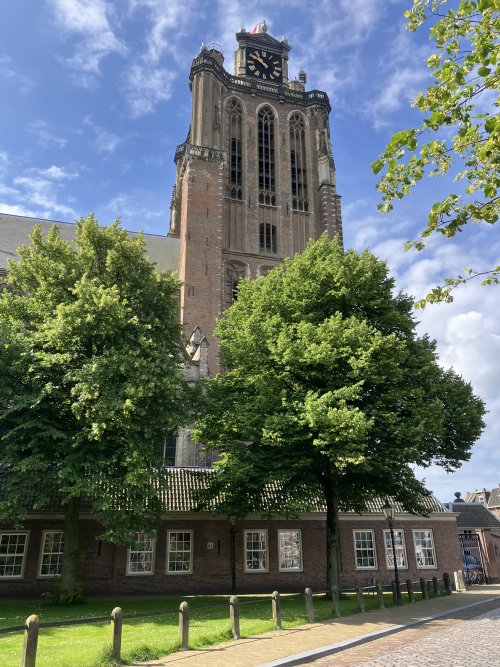 Grote Kerk |
We decided to explore once again this lovely town that we last visited in July 2015, the year when Rex turned Duonita into a floating shanty-town by draping sails and canvases all over it to keep the sun out. People came from miles away to take photos of the spectacle, and Rex almost picked up designer of the year award.
With the Grote Kerk just a stone's throw away from us, that was our first port of call. We were warmly welcomed by two cheery ladies, one of whom spoke excellent English. With a brief outline from them, and loaded up with brochures, we set about tackling this grand cathedral.
The Grote Kerk (Great Church) was the most well-known monument of Dordrecht, and a landmark in the city. The church was built on the site of an early medieval chapel, construction beginning in the early 14th century. Some hundred years later, around 1450, work had proceeded as high as the gallery, but then in 1457 fate struck. Both church and tower were seriously damaged during an enormous fire that raged through half the city. Having to rebuild the tower, however, offered an opportunity to change the design resulting in a Brabantine Gothic style. The tower was to get an octagonal stone crowning and to attain a height of no less than 108m . But as the tower started to subside, the idea was dropped. The freestanding western entrance to the tower was a reminder of this 16th century plan to tear down the tower in order to enlarge the church building. But this part of the plan was abandoned too. Finally, in 1626 construction came to an end with the installation of four colossal Baroque clock faces that still outline the silhouette of "the Dordtse dom, the city's cathedral".
During the 1953-1973 restoration, the slow subsidence process was brought to a standstill. The original traceries were reapplied too, and the buildings surrounding the tower were restyled and given a function in accordance with the use of the tower. At the time of writing, the 68m tower was 2.25m off plumb.
This was a truly beautiful building inside. The Grote Kerk was the only church in Holland with stone vaulting and one of the largest churches in the country, with a length of 108m and a height of 24m. The beautiful interior had 56 columns with cabbage-leaf capitals.
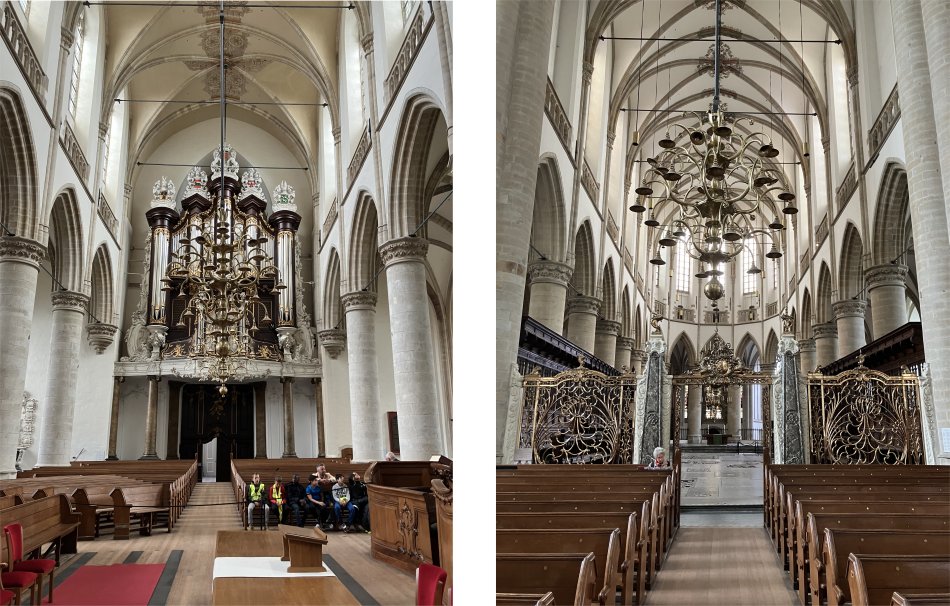 The Majesty of it All |
Around the choir stood 12 chapels. In the Jerusalem Chapel at the east end were three stained glass windows depicting important events in the history of the town: on the left the St Elizabeth's Day flood of 1421, in the centre the great fire of 1457 and on the right the surprise attack by English troops led by Jan van Egmond in 1480.
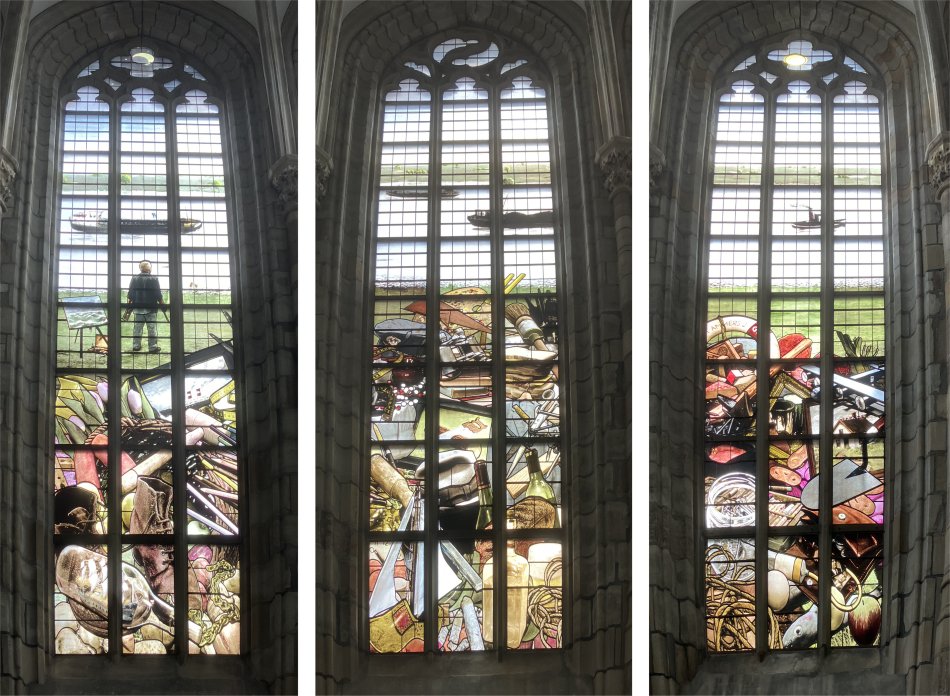 Broere Windows in St George's Chapel, Themed on the Dordtse Guilds |
Also of note was the large organ, built in 1671 by Nicolaas Hagen of Antwerp. The organ-case was decorated with the coats of arms of Dordrecht and of former burgomasters. On the magnificent, lavish pulpit (1765) were scenes from the life of Christ.
The internationally famous Dordrecht carillon is renowned for its good acoustics and pure tone, and apparently since January 2000 had had the largest and most sonorous carillon in Europe. This was quite unusual considering the tower had not had a carillon for almost three centuries. The carillon consisted of 67 bells, the oldest of which dated from the 15th century. All these bronze bells weighed approximately 55,000 kilos, and were located in the age-old wooden belfry inside the huge bell-chamber measuring 10x10x14m, positioned 45m above the ground.
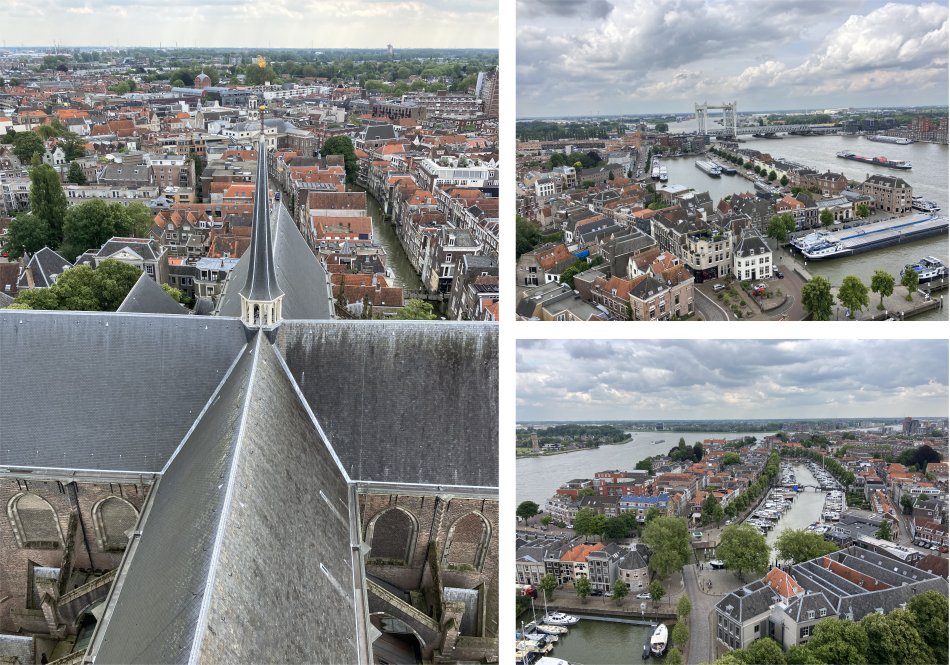 Views from the Top |
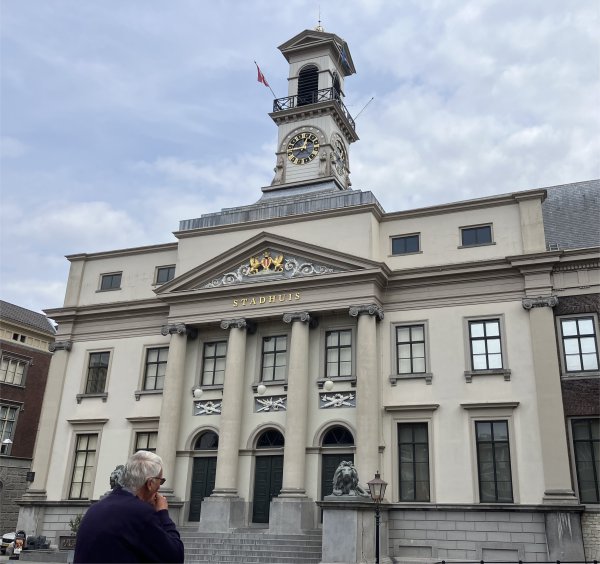 Stadhuis |
Once we were both suitably refreshed by coffees, we left this haven and wandered off along quaint back streets packed with a multitude of shops selling some of the most bizarre merchandise imaginable. Then, as a bit of light relief, the Stadhuis suddenly presented itself before us.
The neoclassical facade that the Stadhuis (City Hall) received in the 19th century hides the medieval secret behind. This building, with its cellars with groined vaults, and its roof with the original wooden construction, was built in the 14th century as the Flemish commodity exchange. It became the home of the city council in 1544.
On a wall over the canal clearly visible from the Lombardbrug in front of the Stadhuis, a mural with the title "Grachtwacht" had been created by artists Frans Kromeich and Rob van Kooten. It depicts brothers Johan and Cornelis de Witt, and artists Arij Scheffer, Aelbert Cuyp and Ferdinand Bol. They are contemporaries from the 17th century, except for Arij Scheffer who lived a century later.
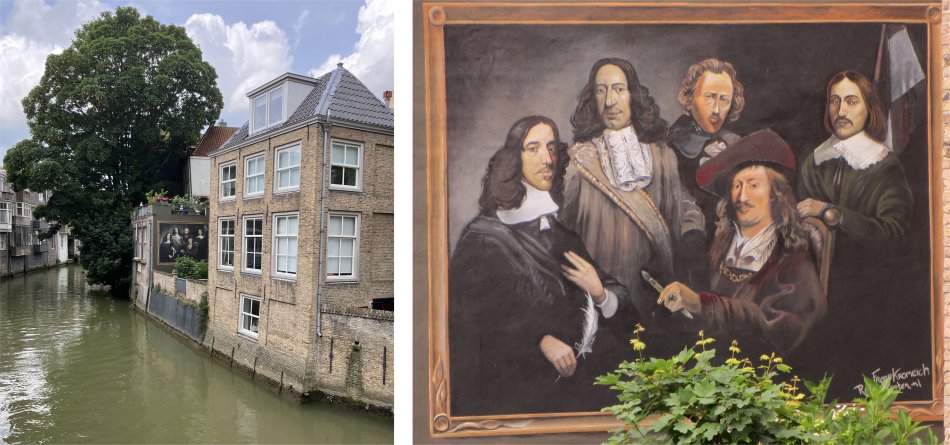 "Grachtwacht" - Johan and Cornelis de Witt, and artists Arij Scheffer, Aelbert Cuyp and Ferdinand Bol |
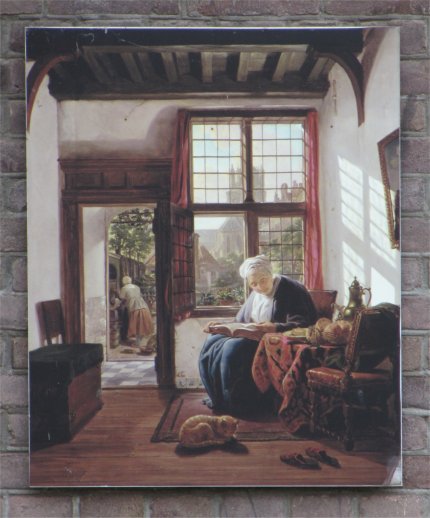 Another Painting by the Lombardbrug |
A short distance further down Groenmarkt we reached the Visbrug. At this junction stood the Bibliothek or public library. This was split between two adjacent buildings, the modern one all glass and steel, the other a beautiful medieval building with golden sheep adornments. There is a hidden story behind the various sheep adornments in this city. During carnival time, Dordrecht is nicknamed the Ooi- en Ramsgat (Ewe's and Ram's hole), and its inhabitants are the Schapenkoppen (Sheepheads). The origin of those names comes from an old folk story about two men trying to escape the local tax on imported livestock. It is said that sometime in the 17th century, two men dressed up a sheep they had bought outside the city, attempting to disguise it as a man. When the threesome passed through the city gate, the sheep bleated and was uncovered. That is why nowadays, tourists can buy sheep-related souvenirs in Dordrecht.
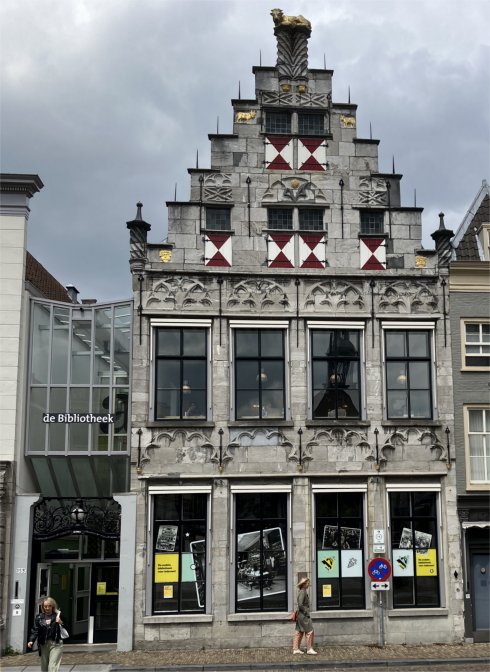 Bibliothek |
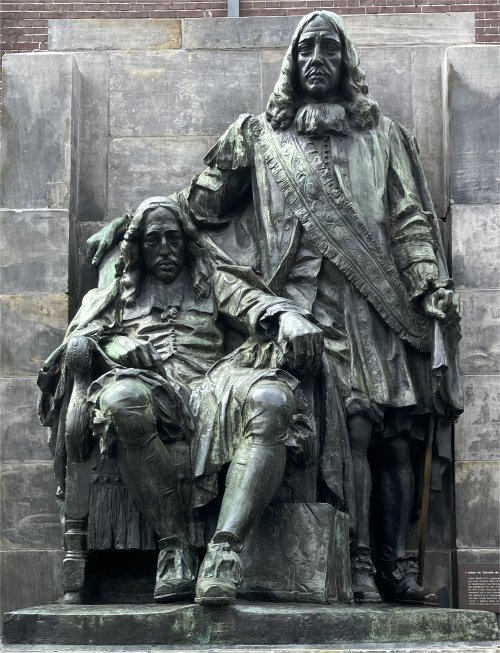 Johan and Cornelis de Witt |
Located in the historic centre of the city, the museum is a former Augustinian monastery dating from the 13th century. The building was purchased in 1835 by the municipality, served as a school for many years, and then as a convent. After a period of restoration between 1968 and 1972, the building became a meeting place for culture and history. In was in this museum that the First Free State Assembly took place in 1572, an important event laying down the foundations of religious freedom and democracy, which formed the basis of the independent Republic of the Netherlands, the forerunner of Netherlands today.
As we arrived at the small square where the Hof is located, the nearby state school suddenly erupted and hundreds of children flooded out creating a huge din. Armies of parents on bikes started collecting them, zooming off in all directions at pace, and we were trying to pick our way through this mayhem without creating chaos.
Then we made a short detour up to the Groothoofd to take in once again the view of this great European waterway junction in action, I never tire of it. Finally it was a hike back to the Nieuwe Haven.
While Rex relaxed, I headed back into town in order to purchase presents for my grandchildren. Once all presents had been secured into my bag, I explored a couple of galleries, and took a circuitous route back to the boat via one of the many concentric canals.
Evening was spent at Restaurant Lef Dordrecht on the opposite bank to where Duonita was berthed, a restaurant we became acquainted with on previous visits to the town.
Blue skies had long been replaced by grey, overcast masses, and a damp, chill hung in the air; a sign of things to come.
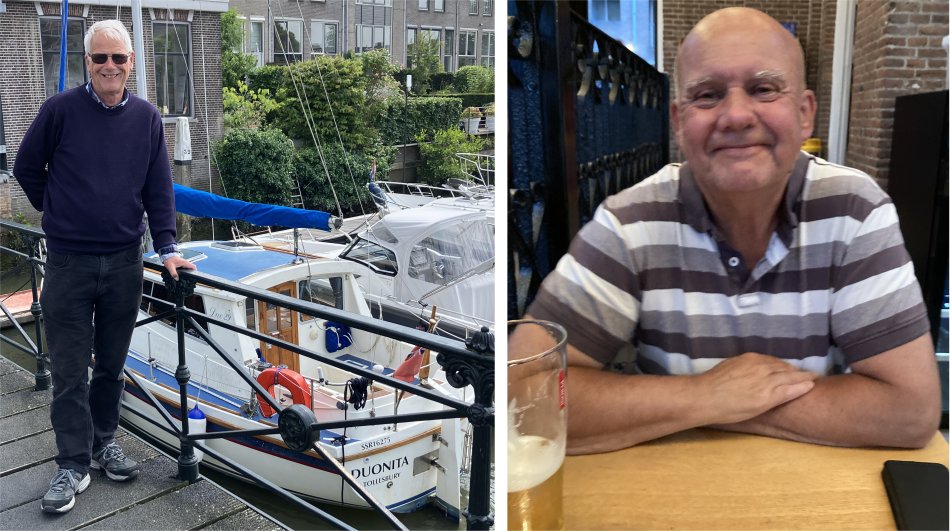 The Likely Lads |
